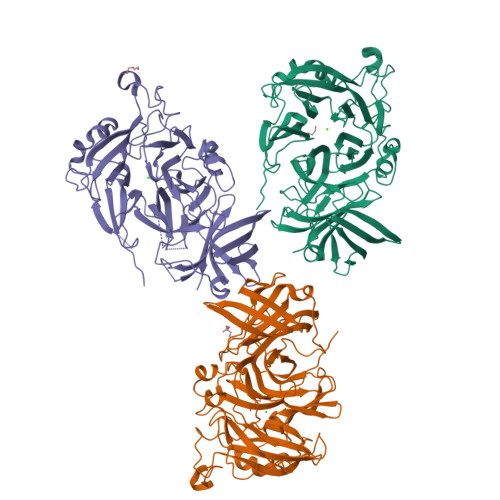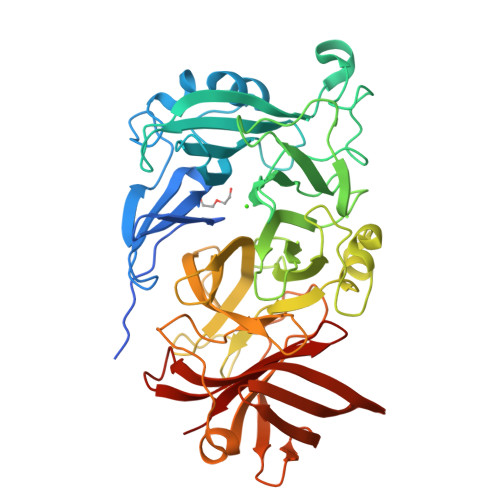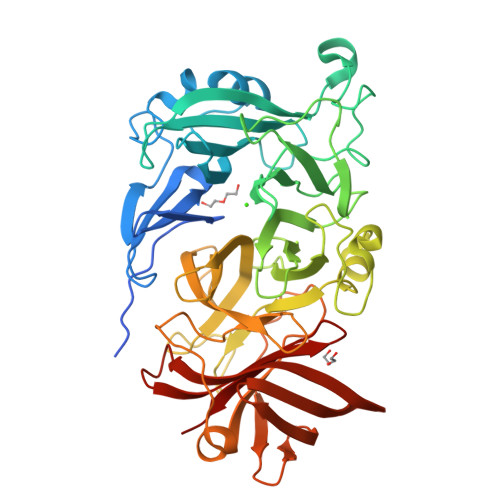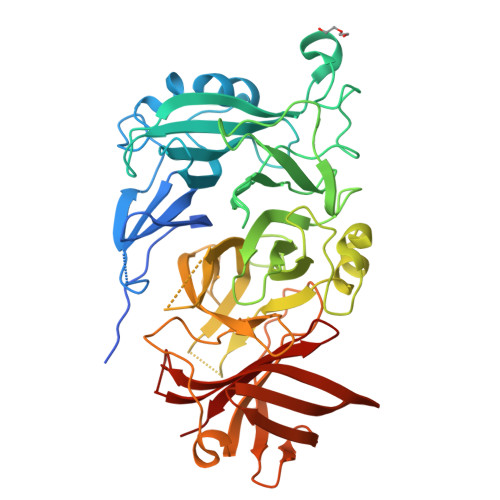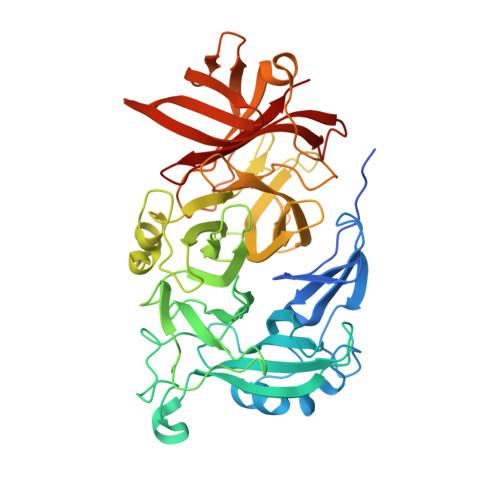Mechanistic strategies for catalysis adopted by evolutionary distinct family 43 arabinanases.
Santos, C.R., Polo, C.C., Costa, M.C., Nascimento, A.F., Meza, A.N., Cota, J., Hoffmam, Z.B., Honorato, R.V., Oliveira, P.S., Goldman, G.H., Gilbert, H.J., Prade, R.A., Ruller, R., Squina, F.M., Wong, D.W., Murakami, M.T.(2014) J Biological Chem 289: 7362-7373
- PubMed: 24469445
- DOI: https://doi.org/10.1074/jbc.M113.537167
- Primary Citation of Related Structures:
4KC7, 4KC8, 4KCA, 4KCB - PubMed Abstract:
Arabinanases (ABNs, EC 3.2.1.99) are promising catalysts for environmentally friendly biomass conversion into energy and chemicals. These enzymes catalyze the hydrolysis of the α-1,5-linked L-arabinofuranoside backbone of plant cell wall arabinans releasing arabino-oligosaccharides and arabinose, the second most abundant pentose in nature. In this work, new findings about the molecular mechanisms governing activation, functional differentiation, and catalysis of GH43 ABNs are presented. Biophysical, mutational, and biochemical studies with the hyperthermostable two-domain endo-acting ABN from Thermotoga petrophila (TpABN) revealed how some GH43 ABNs are activated by calcium ions via hyperpolarization of the catalytically relevant histidine and the importance of the ancillary domain for catalysis and conformational stability. On the other hand, the two GH43 ABNs from rumen metagenome, ARN2 and ARN3, presented a calcium-independent mechanism in which sodium is the most likely substituent for calcium ions. The crystal structure of the two-domain endo-acting ARN2 showed that its ability to efficiently degrade branched substrates is due to a larger catalytic interface with higher accessibility than that observed in other ABNs with preference for linear arabinan. Moreover, crystallographic characterization of the single-domain exo-acting ARN3 indicated that its cleavage pattern producing arabinose is associated with the chemical recognition of the reducing end of the substrate imposed by steric impediments at the aglycone-binding site. By structure-guided rational design, ARN3 was converted into a classical endo enzyme, confirming the role of the extended Arg(203)-Ala(230) loop in determining its action mode. These results reveal novel molecular aspects concerning the functioning of GH43 ABNs and provide new strategies for arabinan degradation.
Organizational Affiliation:
From the Brazilian Biosciences National Laboratory and.








